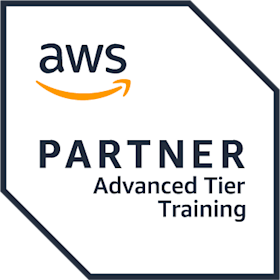Course subjects
Module 1: Introduction to data lakes
Describe the value of data lakes
Compare data lakes and data warehouses
Describe the components of a data lake
Recognise common architectures built on data lakes
Module 2: Data ingestion, cataloging, and preparation
Describe the relationship between data lake storage and data ingestion
Describe AWS Glue crawlers and how they are used to create a data catalog
Identify data formatting, partitioning, and compression for efficient storage and query
Module 3: Building a Data Lake with AWS Lake Formation
Recognise how data processing applies to a data lake
Use AWS Glue to process data within a data lake
Describe how to use Amazon Athena to analyse data in a data lake
Lab 01: Building a Data Lake with AWS Lake Formation
Module 4: Data Processing and Analysis
Describe the features and benefits of AWS Lake Formation
Use AWS Lake Formation to create a data lake
Understand the AWS Lake Formation security model
Lab 2: Build a data lake using AWS Lake Formation
Module 5: Additional Lake Formation configurations
Explain the available built-in Blueprints to create and populate a new Lake Formation
Describe methods for applying advanced permissions to secure data access and workflow
Describe fine-grained row/cell access control
Explain the Lake Formation Tag-based access control mechanism and the different use cases for Named access control vs. Tag-based access control
Describe access flow that enforces fine-grained access policies to both catalog metadata and underlying data resource for analytics services connecting to Lake Formation
Module 6: Modern Data Architecture
Explain capabilities of a modern data architecture: Scalable data lakes, Purpose-built analytics services, Seamless data movement, unified governance, and performance and cost-effectiveness
Articulate the typical data movement within a modern data architecture: Inside out, Outside in, Around the perimeter, and Sharing across
Describe focus of building and maintaining data products as a service
Describe a typical Data Mesh architecture using Lake Formation and the key enablers supporting this methodology
Lab 3: Building and publishing a data product in Lake Formation
Module 7: Course Wrap Up
Please note: This is an emerging technology course. Course outline is subject to change as needed.

